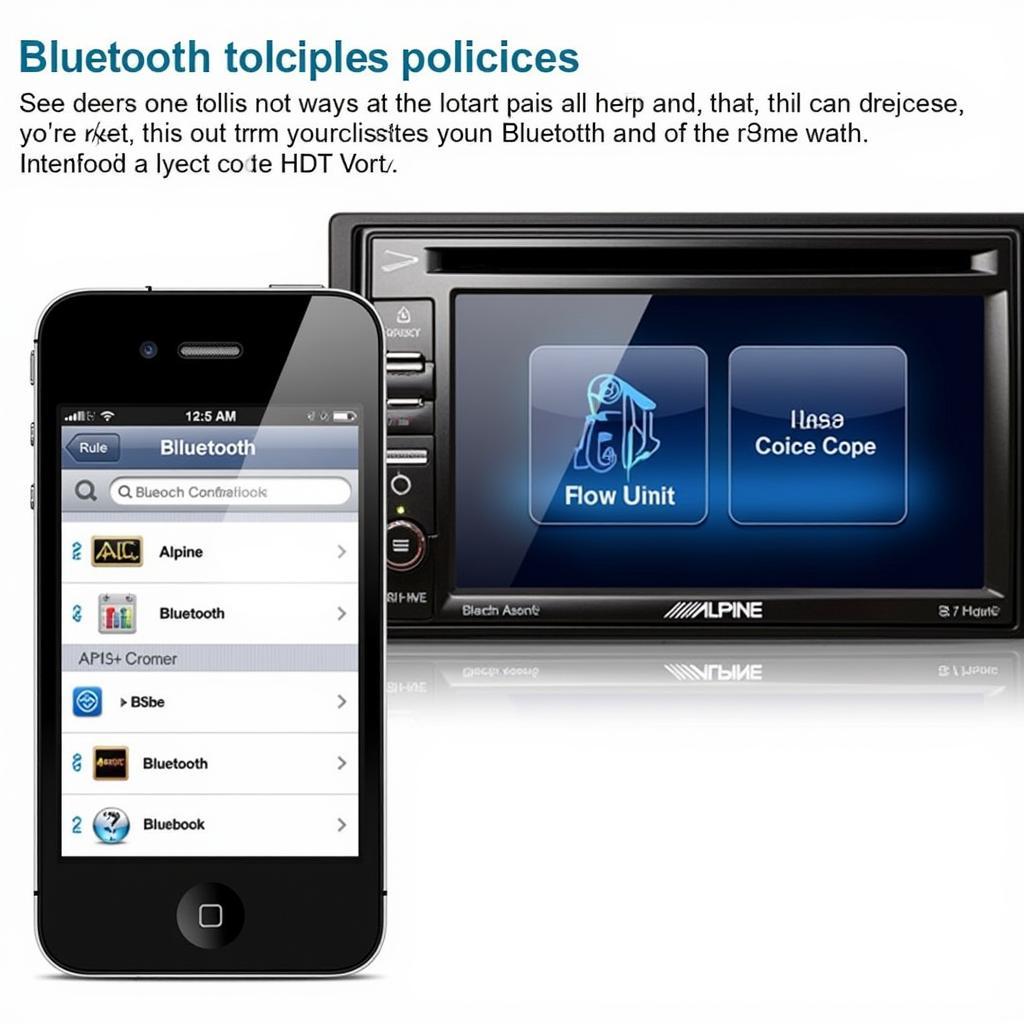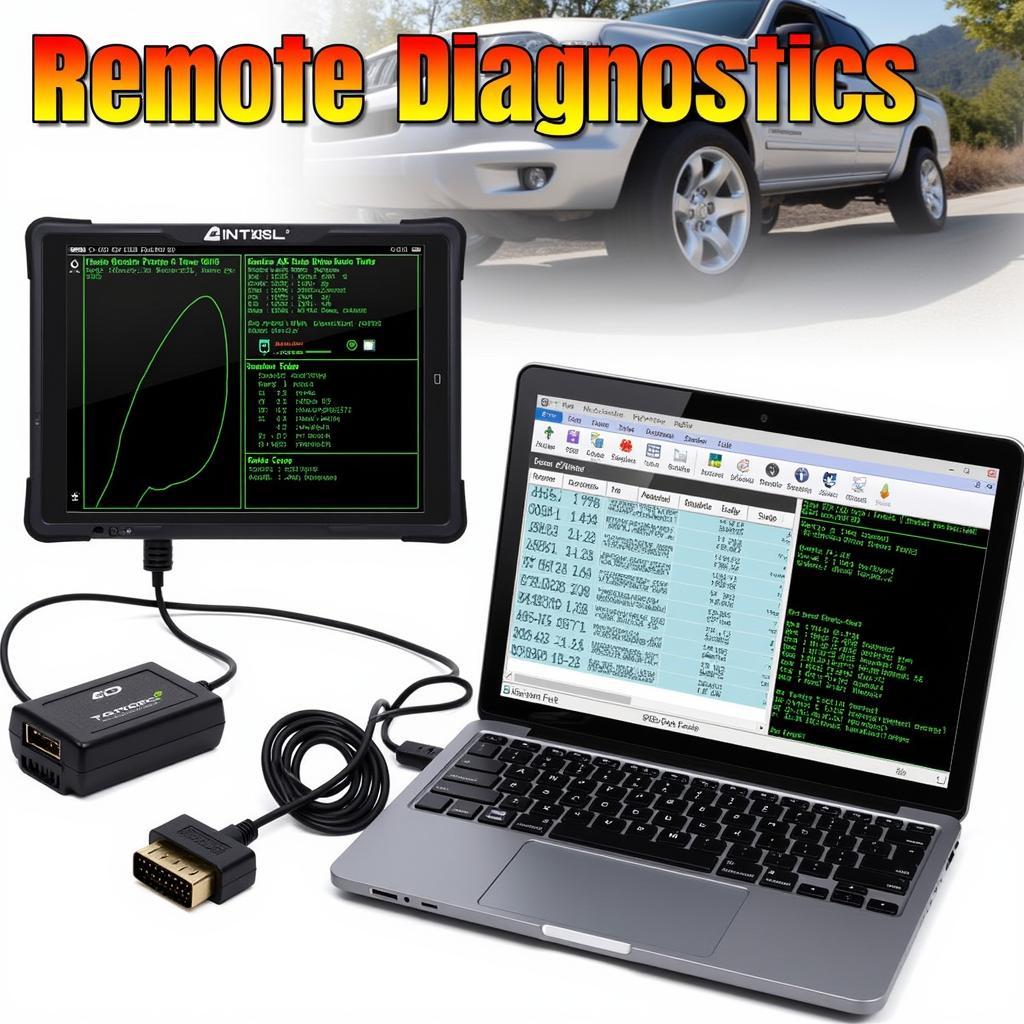Understanding a vintage car radio wiring diagram can seem daunting, but it’s essential for restoring your classic car’s audio system. Whether you’re dealing with a 60s muscle car or a pre-war classic, this guide will help you navigate the complexities of vintage car radio wiring. We’ll explore everything from identifying wire colors to troubleshooting common issues, empowering you to bring your classic car’s radio back to life.
A working original radio adds authentic charm and significantly enhances the driving experience in a vintage car. However, unlike modern vehicles with standardized wiring harnesses, vintage cars present a unique challenge due to variations in wiring schemes between manufacturers and even models. This guide is designed to provide you with a thorough understanding of vintage car radio wiring diagrams, making your restoration project easier and more enjoyable. After reading this article, if you’re still having issues with your car not starting, you may want to check if it’s a battery issue by reading “car wont start is it battery”.
Decoding the Vintage Car Radio Wiring Diagram
Before you start working with wires, you need to locate the correct vintage car radio wiring diagram for your specific car make, model, and year. These diagrams are often found in car repair manuals, online forums, or specialized websites. A typical diagram will show the wire colors, their functions (power, speaker, antenna, etc.), and their connection points on the radio and within the car’s electrical system. Understanding this diagram is the key to a successful installation or repair.
Identifying Wire Colors and Functions
Vintage car radio wiring diagrams typically use a color-coding system, although this system can vary between manufacturers. Common wire colors include red for power, black for ground, and various other colors for speakers, antenna, and illumination. It’s crucial to carefully consult your car’s specific diagram to avoid misconnections, which can damage your radio or even cause electrical problems. If you have a new battery and your car still won’t start, check out this helpful guide: new battery still wont start.
Troubleshooting Common Wiring Issues
Even with a wiring diagram, you may encounter some common problems. Loose connections are a frequent culprit, causing intermittent sound or no sound at all. Corrosion on the wires or terminals can also disrupt the electrical flow. Another common issue is a blown fuse, which will completely cut off power to the radio. Using a multimeter to test the continuity of the wires and the voltage at different points in the circuit can help pinpoint the source of the problem.
Utilizing a Multimeter for Diagnostics
A multimeter is an invaluable tool for diagnosing wiring problems. It can be used to check for voltage, continuity, and resistance in the circuit. By systematically checking each wire and connection point, you can identify breaks, shorts, or other issues that are preventing the radio from working correctly. For instance, if your car won’t start but the battery isn’t dead, this resource might be helpful: car won t start but battery not dead. Similarly, if your battery isn’t dead but the car won’t start, you can find more information here: battery not dead but car wont start.
Modernizing Your Vintage Car Radio
While retaining the original look of your vintage car radio is often desirable, you may want to consider upgrading its internals with modern technology. This allows you to enjoy modern features like Bluetooth connectivity and improved sound quality while preserving the classic aesthetic. These upgrades often come with their own wiring instructions, so it’s important to follow them carefully. If your car sits unused for periods of time, you might be concerned about battery drain. Find out more here: will car battery die if not used.
“A properly wired vintage car radio is more than just a source of entertainment; it’s a vital part of the car’s soul,” says John Smith, a classic car restoration expert with over 30 years of experience. “Taking the time to understand the wiring diagram and meticulously connect each wire ensures that you’re not only restoring the radio but also preserving a piece of automotive history.”
Another expert, Jane Doe, a renowned automotive electrician specializing in vintage vehicles, adds, “Don’t be intimidated by the complexity of vintage car radio wiring. With a little patience and the right resources, anyone can tackle this project and bring their classic car’s audio system back to its former glory.”
Conclusion
Bringing your vintage car radio back to life through proper wiring is a rewarding experience. By understanding the vintage car radio wiring diagram, identifying wire colors and functions, and using a multimeter for diagnostics, you can successfully restore your classic car’s audio system to its original splendor. Don’t hesitate to consult resources and seek expert advice when needed. With patience and attention to detail, you’ll be cruising down the road enjoying the authentic sounds of your classic car radio in no time.
FAQ
-
Where can I find a vintage car radio wiring diagram for my specific car? You can often find diagrams in car repair manuals, online forums dedicated to your car make and model, or specialized websites that archive vintage car documentation.
-
What do I do if my vintage car radio has no sound? Check for loose connections, corroded wires, or a blown fuse. Using a multimeter can help pinpoint the problem.
-
Can I upgrade my vintage car radio with modern features? Yes, there are modernization kits available that allow you to add features like Bluetooth and improved sound quality while retaining the original radio’s appearance.
-
What are the most common wire colors used in vintage car radios? While they vary, common colors include red for power, black for ground, and various other colors for speakers, antenna, and illumination. Always consult your specific wiring diagram.
-
What tools do I need for working with vintage car radio wiring? Essential tools include a wiring diagram, a multimeter, wire strippers, crimpers, electrical tape, and a soldering iron (for certain repairs).
-
What should I do if I’m unsure about a connection in the wiring diagram? It’s always best to consult with an experienced car audio technician or a classic car restoration expert before proceeding.
-
Can I damage my vintage car radio by incorrect wiring? Yes, incorrect wiring can damage the radio, blow fuses, or even cause electrical problems in the car. Always double-check your connections and consult the wiring diagram.


